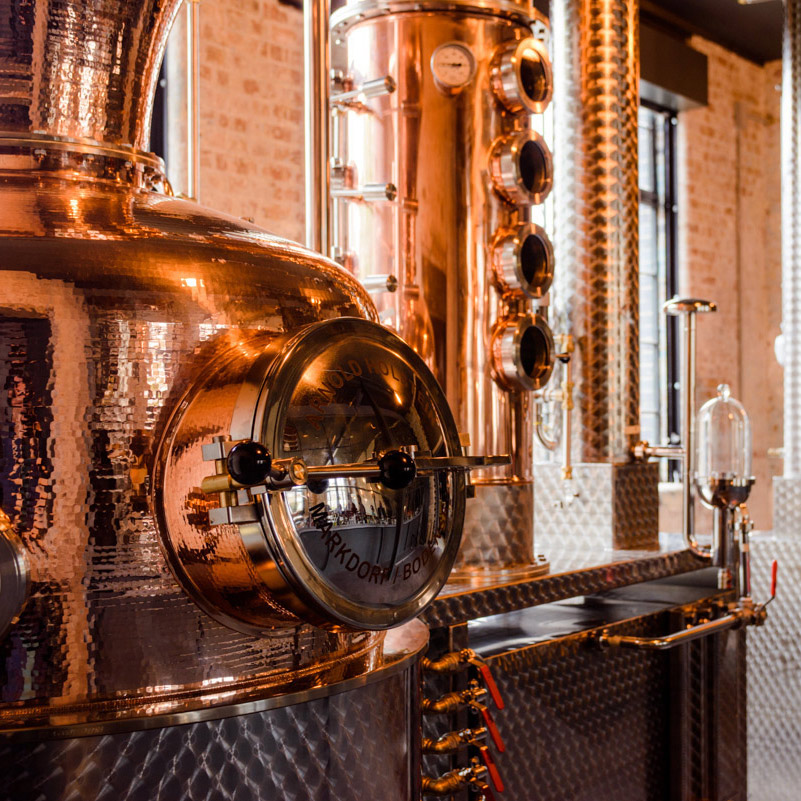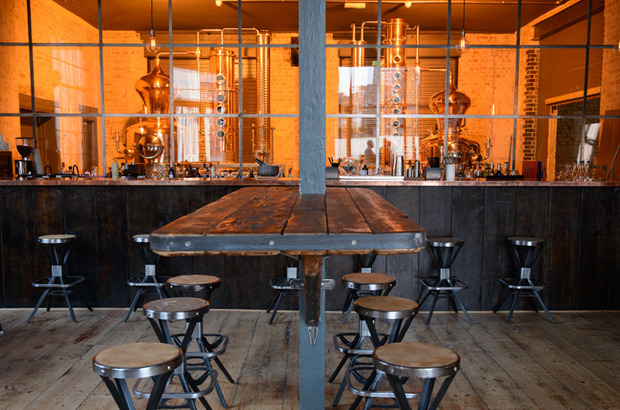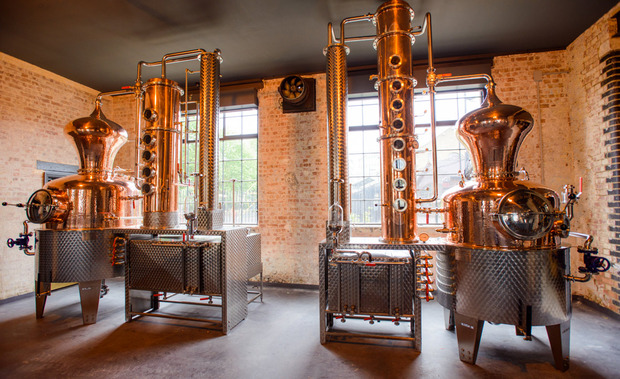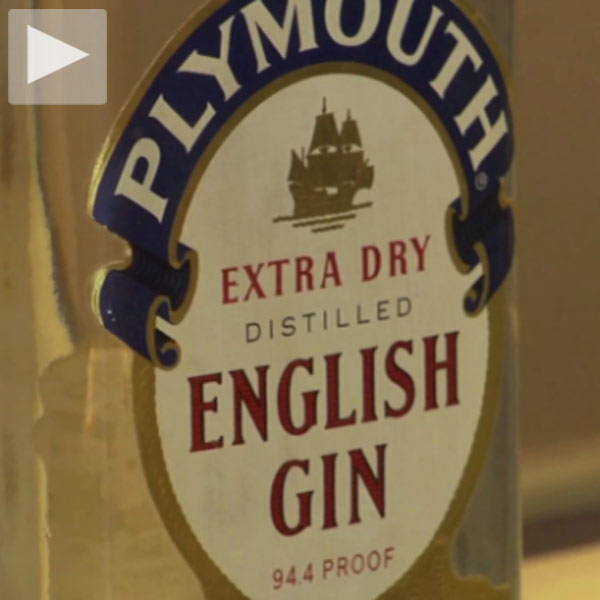East London Liquor Company
Bringing distilling back to the East End with distinct craft spirits done in the old style


Gin has long been the classic London drink, and the spirit is making a comeback in the city’s cocktail scene. At the border of Victoria Park in Tower Hamlets, a new distillery and bar, East London Liquor Company, is bringing locally made gin back to the area, which has an extensive history of liquor-making. Founder Alex Wolpert previously ran the London bar and restaurant Barworks, until his passion for gin led him to try creating the perfect version himself. Alongside him are master distiller Jamie Baxter and distiller Tom Hills, both from City of London Distillery.
East London Liquor Company might be reintroducing gin-making to Tower Hamlets, but it’s offering a very different drink than the one that got the nickname “Mother’s Ruin” in the 18th century. The distillery produces a London Dry Gin, which Wolpert describes as “very juniper-forward, citrusy and dry,” as well as two premium gins. The new outfit will also be producing its own vodka and whiskey, making it the first whiskey distillery to open north of the Thames in over a century. We spoke to Wolpert and Hills about the story behind the bar and distillery, and about what makes their gin unique.

What made you decide to start your own distillery, and how would you describe the gin you produce?
Alex Wolpert: I’m not a distiller but I’ve made drinks and sold drinks. I’ve been in the industry a long time and always wanted to make a good liquid, an interesting celebration of what gin can be. When people tell me they don’t like gin, it’s usually because they haven’t tried the right one. We grow a lot of the botanicals that we use in the gin in our garden and all the liquor is made here. We try to keep as much of the production in-house as possible.
Our two premium gins came about when I gave Jamie Baxter a list of contrasting botanicals to go for. He did two test runs, and they were both so good that we just thought, “What the hell, we’ll do two premium gins.” One is dry and citrusy and has notes of Darjeeling and grapefruit, among others. The other is much more herbaceous and has sage, bay leaves, lavender, fennel and thyme. They both have quite a high ABV, to really push the flavor through. You wouldn’t want to mix the gin because the finish is so long. You want to use it in a martini, for example. We really try to celebrate gin and what it can be.

Why choose the Tower Hamlets/Hackney area to open in?
AW: I spent 18 months searching for a venue and looked all over east London. It didn’t have to be in the east, but part of the idea behind East London Liquor Company was to bring back an industry that used to be here. This entire area used to be full of distilleries. The space we’re in is a former pub, but we’ve completely changed it. It’s good because it’s big enough to have a bar to showcase the spirits—it’s really all about de-mystifying distilling. And the fact that everything is done on the premises means there’s a sense of ownership of the process as well as of the product. There’s an autonomy to it, which is great.
East London Liquor Company is bringing gin production back to the area, but how similar is the process now to what it would have been a century ago?
Tom Hills: With major producers—for example, Gordon and Tanqueray—the process of making gin has changed over time to meet demand. What the second “gin craze” that’s going on now has done is taken the production of gin back to the way it was traditionally done, which was in a batch process rather than a continuous process. Very big producers use a two-shot process. They distill their botanicals at a much higher concentration with a smaller amount of alcohol, and then add that to a neutral spirit. So they’re basically making a gin concentrate and “alcohol-ing” it down. Whereas a one-shot process, which is what we use and everyone who is a craft distiller uses, means that every bit of alcohol that’s in the bottle has passed through a still. So in that sense, craft distillers make gin the traditional way.

You use custom-made stills from Bodensee, Germany. Could you tell us a bit about how they work?
TH: The shape of these stills and the fact that they’re made of copper is a very traditional thing, but they’ve got all the modern bells and whistles hiding behind the traditional exterior. They’ve got a rectification column, dephlegmator, all kinds of modern technology built into them, ensuring that we have the greatest control possible over consistency and quality. We have electrical controls and a steam jacket. Whereas before it would have been done over open heat, but essentially what we’re doing is taking things back to how it was, albeit with slightly more safety measures in place. Health and Safety would not be happy if we were trying to distill gin over an open fire!
For more information about the spirits, distillery, bar and the team behind them, visit East London Liquor Company online.
Images courtesy of East London Liquor Company












